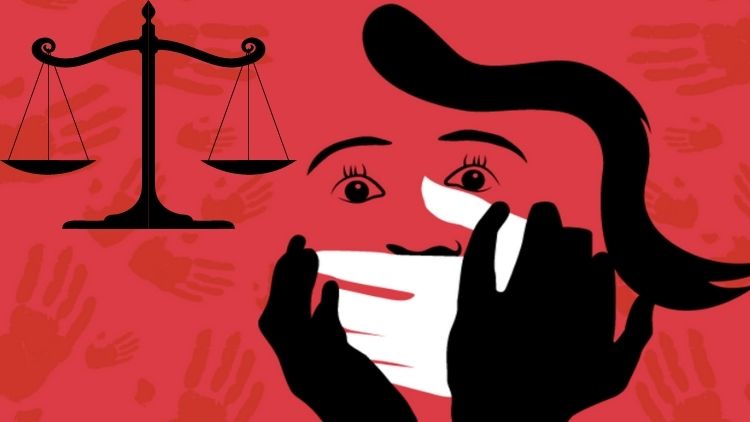Sexual Harassment Laws in India: A Comprehensive Guide to Legal Rights and Protections

Introduction
Sexual harassment is a pervasive issue that affects individuals across various aspects of society. Recognizing the significance of this problem, the Indian government has enacted stringent laws and regulations to protect individuals from sexual harassment in the workplace and other settings. In this comprehensive guide, we will explore the sexual harassment laws in India, outlining the legal rights and protections available to victims.
Table of Contents
Understanding Sexual Harassment Laws: Key Concepts and Definitions
To comprehend the sexual harassment laws in India, it is crucial to familiarize oneself with the key concepts and definitions associated with this subject. Let’s take a closer look at these fundamental aspects:
- Sexual Harassment: Sexual harassment refers to any unwelcome sexually determined behavior, whether directly or indirectly, which may violate a person’s dignity and create an intimidating, hostile, or offensive environment. It can manifest in various forms, including physical, verbal, non-verbal, or written acts.
- Workplace: The term “workplace” encompasses any place where a person is employed or engaged in work-related activities, including organizations, offices, factories, shops, and educational institutions.
- Employee: An “employee” refers to any person employed at a workplace, whether on a permanent, temporary, or contractual basis.
- Employer: The “employer” refers to any person or entity who has control and authority over the workplace and its employees. This can include both individuals and organizations.
- Internal Complaints Committee (ICC): An Internal Complaints Committee is a body constituted within an organization to address complaints related to sexual harassment. It is responsible for conducting inquiries, recommending appropriate actions, and ensuring the implementation of preventive measures.
Sexual Harassment Laws: Legal Rights and Protections
In India, the legal framework addressing sexual harassment primarily revolves around the Sexual Harassment of Women at Workplace (Prevention, Prohibition, and Redressal) Act, 2013. This landmark legislation lays down the provisions and procedures to prevent and address sexual harassment at the workplace. Here are the key rights and protections offered by the law:
- Protection against Sexual Harassment: The Act provides protection to women against sexual harassment at all workplaces, irrespective of their nature or size. It recognizes the right of every woman to work in an environment free from sexual harassment.
- Internal Complaints Committee (ICC): As per the law, every organization with ten or more employees is required to constitute an Internal Complaints Committee. The ICC is responsible for receiving complaints, conducting inquiries, and taking appropriate action within a stipulated timeframe.
- Duty of the Employer: The employer has a legal obligation to create a safe working environment, prevent sexual harassment, and effectively address complaints. Employers must display the sexual harassment policy at a conspicuous location within the workplace.
- Confidentiality and Non-Disclosure: The Act emphasizes the need for maintaining confidentiality during the proceedings of the complaint and prohibits the disclosure of the identity of the complainant and witnesses.
- Protection against Retaliation: The law prohibits any adverse action or retaliation against the complainant or witnesses for filing a complaint or participating in the proceedings. Employers found guilty of retaliation can face severe penalties.
- Remedial Measures: The Act provides for a range of remedial measures to ensure the effective redressal of complaints, including counseling, warnings, transfer of the perpetrator, and monetary compensation.
- Legal Remedies: In addition to the internal redressal mechanism, victims of sexual harassment can also seek legal remedies by filing a complaint with the appropriate authorities, such as the local police or the State Women’s Commission.
- Awareness and Training Programs: The law encourages employers to conduct awareness and training programs to educate employees about sexual harassment, its consequences, and preventive measures.
Frequently Asked Questions (FAQs)
Q1. Who can file a complaint under the Sexual Harassment of Women at Workplace Act?
Any woman who has experienced sexual harassment at her workplace, including regular employees, temporary employees, contractual employees, and even interns, can file a complaint under the Sexual Harassment of Women at Workplace Act. The Act recognizes the rights of women from all sectors and industries to seek redressal for instances of sexual harassment.
Q2. Is sexual harassment limited to the workplace?
No, sexual harassment is not limited to the workplace alone. While the Sexual Harassment of Women at Workplace Act primarily focuses on addressing sexual harassment in the workplace, it is important to note that sexual harassment can occur in various settings beyond the workplace. It can happen in public spaces, educational institutions, residential areas, and online platforms as well. However, the Act primarily provides legal protections and mechanisms for addressing workplace-related sexual harassment.
Q3. What actions can be taken against the employer for non-compliance with the Act?
If an employer fails to comply with the provisions of the Sexual Harassment of Women at Workplace Act, several actions can be taken against them. These actions may include:
– Imposing penalties: The Act empowers the appropriate authority to impose penalties on the employer for non-compliance. The penalties may range from monetary fines to cancellation of licenses or registrations, depending on the severity of the violation.
– Legal consequences: Non-compliance with the Act can also lead to legal consequences, such as criminal charges or civil lawsuits filed against the employer.
– Damage to reputation: Failure to comply with the Act can result in severe damage to the employer’s reputation. This can have long-term consequences, including loss of business, trust, and credibility.
It is important for employers to prioritize compliance with the Act and take proactive measures to prevent sexual harassment in the workplace.
Q4. Can a male employee file a complaint of sexual harassment?
Yes, a male employee can certainly file a complaint of sexual harassment if they have experienced such misconduct. Although the Sexual Harassment of Women at Workplace Act primarily focuses on women as victims, it does not exclude the possibility of male employees facing sexual harassment. The Act recognizes that anyone, regardless of their gender, can be a victim of sexual harassment and encourages all individuals to come forward and report instances of misconduct.
Q5. What remedies are available to the victim of sexual harassment?
The Sexual Harassment of Women at Workplace Act provides several remedies to the victim of sexual harassment. These remedies include:
– Internal redressal mechanism: The Act mandates the establishment of Internal Complaints Committees (ICCs) within organizations. Victims can approach the ICC to file a complaint and seek redressal. The ICC conducts an inquiry, recommends appropriate actions, and ensures the implementation of preventive measures.
– Legal remedies: If internal redressal does not yield satisfactory results, victims have the right to approach external authorities, such as the local police or the State Women’s Commission, to file a complaint. Legal remedies may include criminal proceedings against the perpetrator and civil lawsuits for compensation.
– Remedial measures: The Act provides for various remedial measures to address the consequences of sexual harassment. These measures can include counseling, warnings, transfer of the perpetrator, or monetary compensation to the victim.
Q6. Can the employer be held liable for the actions of their employees?
Yes, the employer can be held liable for the actions of their employees in cases of sexual harassment. The Sexual Harassment of Women at Workplace Act places a legal responsibility on the employer to provide a safe and harassment-free working environment. If an employee engages in acts of sexual harassment, the employer can be held vicariously liable for their actions. It is crucial for employers to take preventive measures, such as awareness programs, training sessions, and strict disciplinary actions, to deter sexual harassment and create a culture of respect within the organization.
Q7. Are there any time limitations for filing a complaint under the Act?
Yes, there are time limitations for filing a complaint under the Sexual Harassment of Women at Workplace Act. The Act stipulates that a complaint must be filed within three months from the date of the incident or the last incident of harassment. However, the Act also allows for the extension of this time limit in exceptional circumstances if the complainant provides a valid reason for the delay. It is advisable for victims to file a complaint as soon as possible to ensure a prompt and effective redressal process.
Conclusion
The Sexual Harassment of Women at Workplace Act, 2013, has paved the way for creating a safer working environment in India. By recognizing the rights of victims and establishing a robust redressal mechanism, the law acts as a shield against sexual harassment. However, it is essential for organizations to ensure strict compliance with the Act and create a culture of respect and dignity for all individuals. By doing so, we can collectively work towards eradicating sexual harassment and building a more inclusive society.
Remember, knowledge and awareness are powerful tools in the fight against sexual harassment. By staying informed about your rights and responsibilities, you contribute to creating a safer and more equitable world for everyone.
Resources related to sexual harassment laws and legal rights in India:
- Ministry of Women and Child Development, Government of India: The official website of the ministry provides information on the Sexual Harassment of Women at Workplace Act and other initiatives related to women’s rights. Website: https://www.wcd.nic.in/
- National Commission for Women (NCW): The NCW is an apex statutory body dedicated to safeguarding and promoting the rights of women in India. They provide information, support, and assistance to victims of sexual harassment. Website: https://ncw.nic.in/
- Internal Complaints Committee (ICC) Guidelines: The guidelines issued by the Ministry of Women and Child Development outline the composition, functions, and procedures of ICCs within organizations. These guidelines serve as a valuable resource for understanding the internal redressal mechanism. Link: https://wcd.nic.in/sites/default/files/icc.pdf
- Lawyers and Legal Services: Consulting a legal professional experienced in sexual harassment laws can provide personalized guidance and support. Local law firms, legal aid organizations, and online legal service providers can help connect individuals with qualified lawyers.
- State Women’s Commissions: Each state in India has a Women’s Commission that works to protect and promote the rights of women. These commissions often provide information, support, and guidance on issues related to sexual harassment. You can find the contact information for your respective State Women’s Commission through an online search or the official state government website.
- Human Resources Department: If you are an employee, your organization’s Human Resources (HR) department can provide guidance on internal policies, procedures, and the implementation of the Sexual Harassment of Women at Workplace Act. They can also offer assistance in filing a complaint and navigating the internal redressal mechanism.
[Note: The article provided is a creative piece of writing and does not constitute legal advice. For specific legal guidance, it is recommended to consult with a qualified legal professional.]
Breaking the Chains of Silence: Navigating Workplace Harassment and Discrimination

The modern workplace is supposed to be a place of equal opportunity, where employees are treated fairly and with respect. But for far too many women, the reality is very different. Harassment and
The growing menace of cybercrime and how women can protect themselves from online harassment

Cybercrime is a serious and growing problem, and women are often targeted online due to their perceived vulnerability. Here are a few specific ways that women may be targeted by cybercriminals:
Nirbhaya Act Explained

The Nirbhaya gang rape was one of the most horrific episodes in the country’s history. It served as an impetus for various reforms.








